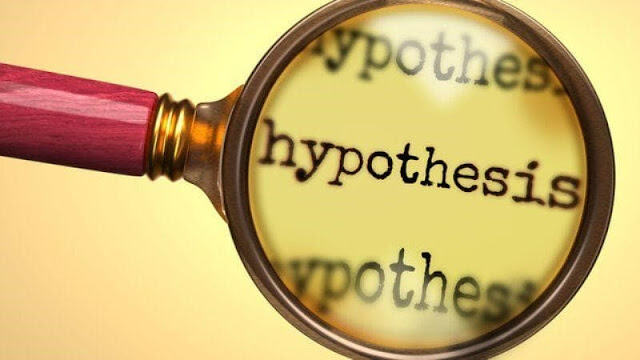
A hypothesis is
nothing more than a verifiable statement to find an answer to a specific
question; A formalized hypothesis forces you to think about what results to
expect in an experiment.
Therefore, a
hypothesis can be used for almost everything, such as testing different results
in everyday tasks, identifying a possible ending in an investigation, forming
the basis of a scientific experiment, etc.
In this article,
you'll learn the reasoning behind it, the different types of hypotheses, as
well as how to write a more self-evident hypothesis.
What is a hypothesis?
A hypothesis is a
method of forecasting, an attempt to find an answer to something that has not
yet been proven, an idea or a proposal based on limited evidence.
In most cases, it is
about proposing relationships between two (or more) variables: the independent
variable (the change made) and the dependent variable (the measure). For
example, suppose you are used to studying all night before an exam, but you are
always too tired to understand the subject clearly, which causes you to get bad
grades.
Therefore, the
hypothesis is that if you study during the day, you will understand the subject
and, consequently, you will get a good grade. In this example, the independent
variable is the study time and the dependent variables are the understanding of
the subject and the grade.
As you can see, a
hypothesis can be used in almost any situation, but it is most common to find
it in research papers or scientific experiments.
When writing a hypothesis, it is essential to
be cautious and thorough before starting to write it down. Since any hypothesis
must be tested by facts, direct evidence, and data evidence, even small flaws
or misunderstandings in the construction of the hypothesis can have a negative
impact on the quality of your research and your subsequent results.
How to write a hypothesis in six
steps
1. Ask a question
Writing a hypothesis
implies having a question to answer. The question should be direct, concrete
and specific. To help identify it, frame this question with the six classic
ones: who, what, where, when, why or how. But remember that a hypothesis must be
a statement and not a question.
2. Gather primary research
Gathering background
information on the topic may require reading various books, academic journals,
experiments, and observations, or it may be as simple as an Internet search.
Remember to consider
your questions from multiple perspectives; conflicting research can be
extremely helpful in developing a hypothesis; you can use your conclusions as
possible rebuttals and frame your study to address these concerns.
3. Define your variables
Once you have
determined what the question will be, you need to identify the independent and
dependent variables, as well as the type of assumptions that apply.
4. Put it in the form of an if-then
statement
When constructing a
hypothesis, it can be helpful to use an "if-then" format. For
example: "If I exercise more, I will lose more weight." This format
can be tricky when dealing with multiple variables, but in general it is a
reliable way of expressing the cause-and-effect relationship that is being
tested.
5. Collect more data to prove your
hypothesis
The priority over a
hypothesis is to answer the question and prove that it is correct or incorrect.
Once you have established your hypothesis and determined your variables, you
can begin your experiments. Ideally, you should gather data that supports your
hypothesis.
6. Write it down
Finally, once you have
written your hypothesis, analyze all the data you have collected and draw your
conclusions in the form of a research paper.








